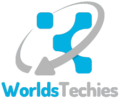Medical imaging technologies have undergone significant advancements in recent years, enabling healthcare professionals to diagnose and manage diseases with greater precision and efficiency. Among these innovations, Positron Emission Tomography-Computed Tomography (PET-CT) scan stands out as a powerful diagnostic tool that combines the strengths of two imaging modalities. Let’s explore what PET-CT scans entail, how they work, and their diverse applications in clinical practice.
What is PET-CT Scan?
PET-CT scan is a hybrid imaging technique that integrates Positron Emission Tomography (PET) and Computed Tomography (CT) functionalities into a single device. PET utilizes a radioactive tracer injected into the body, which emits positrons that interact with nearby electrons, resulting in the emission of gamma rays. These gamma rays are detected by the PET scanner, generating detailed images of metabolic and physiological processes within the body.
CT, on the other hand, utilizes X-rays to produce cross-sectional images of anatomical structures. By combining PET and CT scan, PET-CT imaging provides comprehensive information about both the functional activity and precise anatomical localization of abnormalities within the body.
How Does PET-CT Work?
During a PET-CT scan, the patient is administered a radioactive tracer, typically a form of glucose called fluorodeoxyglucose (FDG), which is preferentially taken up by metabolically active cells, such as cancer cells. After the tracer is injected, the patient undergoes PET imaging to visualize the distribution of the radioactive tracer within the body.
Simultaneously, the CT component of the scan captures detailed anatomical images, providing precise localization of areas with abnormal metabolic activity detected by PET. The PET and CT images are then fused together, allowing healthcare professionals to correlate functional abnormalities with anatomical structures, aiding in diagnosis, staging, and treatment planning.
Applications of PET-CT Scan:
- Cancer Diagnosis and Staging: PET-CT is widely used in oncology for the detection, staging, and monitoring of various cancers. By visualizing the metabolic activity of tumors, PET-CT helps differentiate between benign and malignant lesions, assess tumor aggressiveness, and determine the extent of disease spread (metastasis).
- Treatment Response Assessment: PET-CT plays a crucial role in evaluating the response of tumors to cancer therapies, such as chemotherapy and radiation therapy. Changes in metabolic activity observed on follow-up PET-CT scans can indicate whether the treatment is effective or if adjustments are necessary.
- Neurological Disorders: PET-CT is utilized in neurology for the diagnosis and management of conditions such as epilepsy, Alzheimer’s disease, and Parkinson’s disease. By mapping cerebral glucose metabolism, PET-CT helps identify regions of abnormal brain activity associated with neurological disorders.
- Cardiovascular Imaging: PET-CT imaging can assess myocardial perfusion, viability, and metabolism, providing valuable information for the diagnosis and management of coronary artery disease, myocardial infarction, and other cardiovascular conditions.
- Infectious and Inflammatory Diseases: PET-CT scans are valuable in detecting and localizing areas of infection and inflammation in various organs, aiding in the diagnosis of conditions such as tuberculosis, vasculitis, and osteomyelitis.
Conclusion:
In the realm of diagnostic imaging, PET-CT scan stands as a versatile and indispensable tool, offering valuable insights into both the functional and anatomical aspects of disease processes. From cancer diagnosis and staging to assessing treatment response and evaluating neurological disorders, PET-CT imaging has transformed the way healthcare professionals approach diagnosis and treatment planning.
Ganesh Diagnostic, is the best PET-CT scan center in Delhi which provides advanced medical imaging services, recognizes the significance of PET-CT scan in delivering accurate diagnoses and personalised treatment strategies to patients. As technology continues to evolve, PET-CT imaging will undoubtedly remain at the forefront of modern medicine, driving innovation and improving patient outcomes across a wide spectrum of medical specialties.

